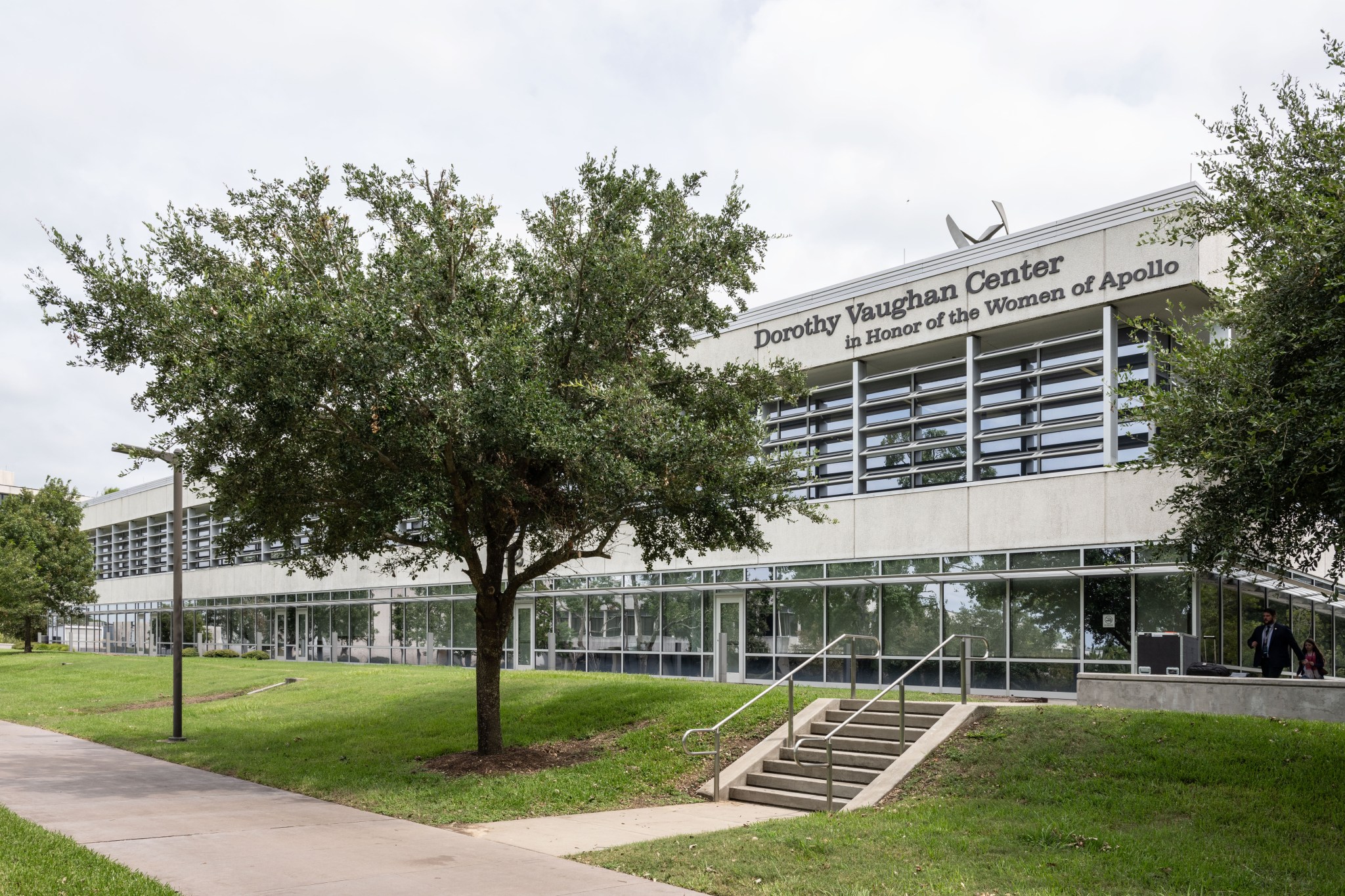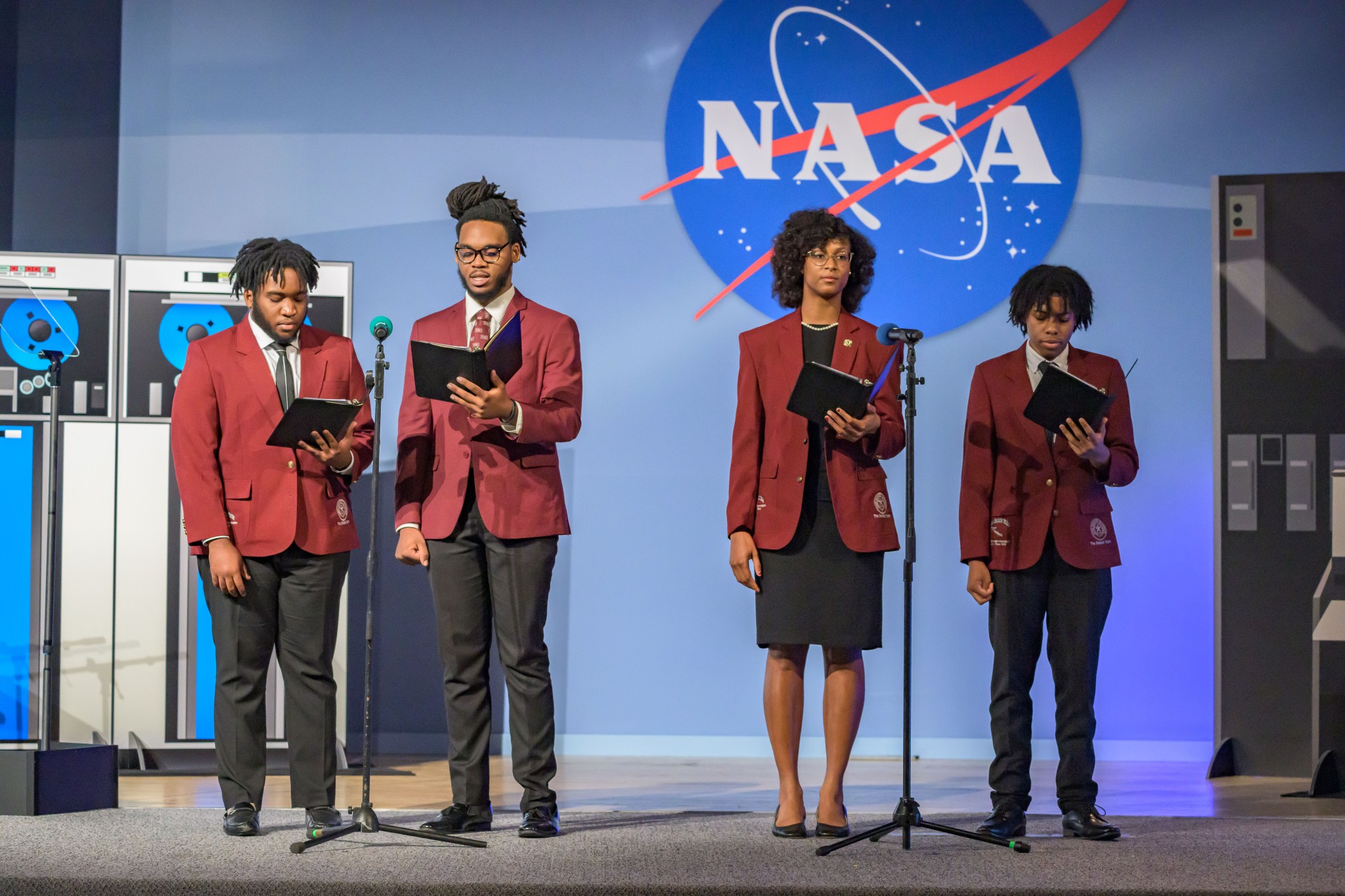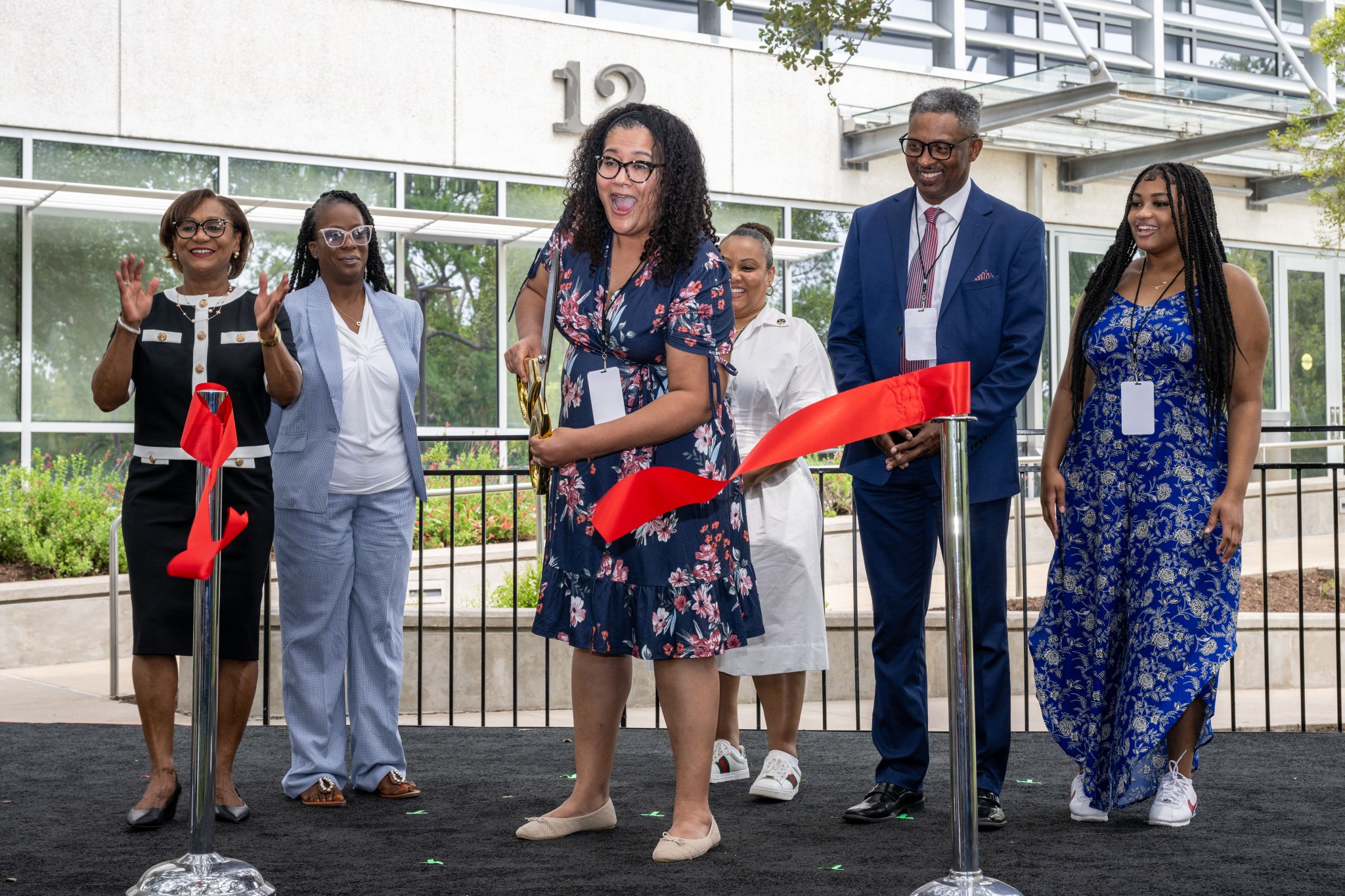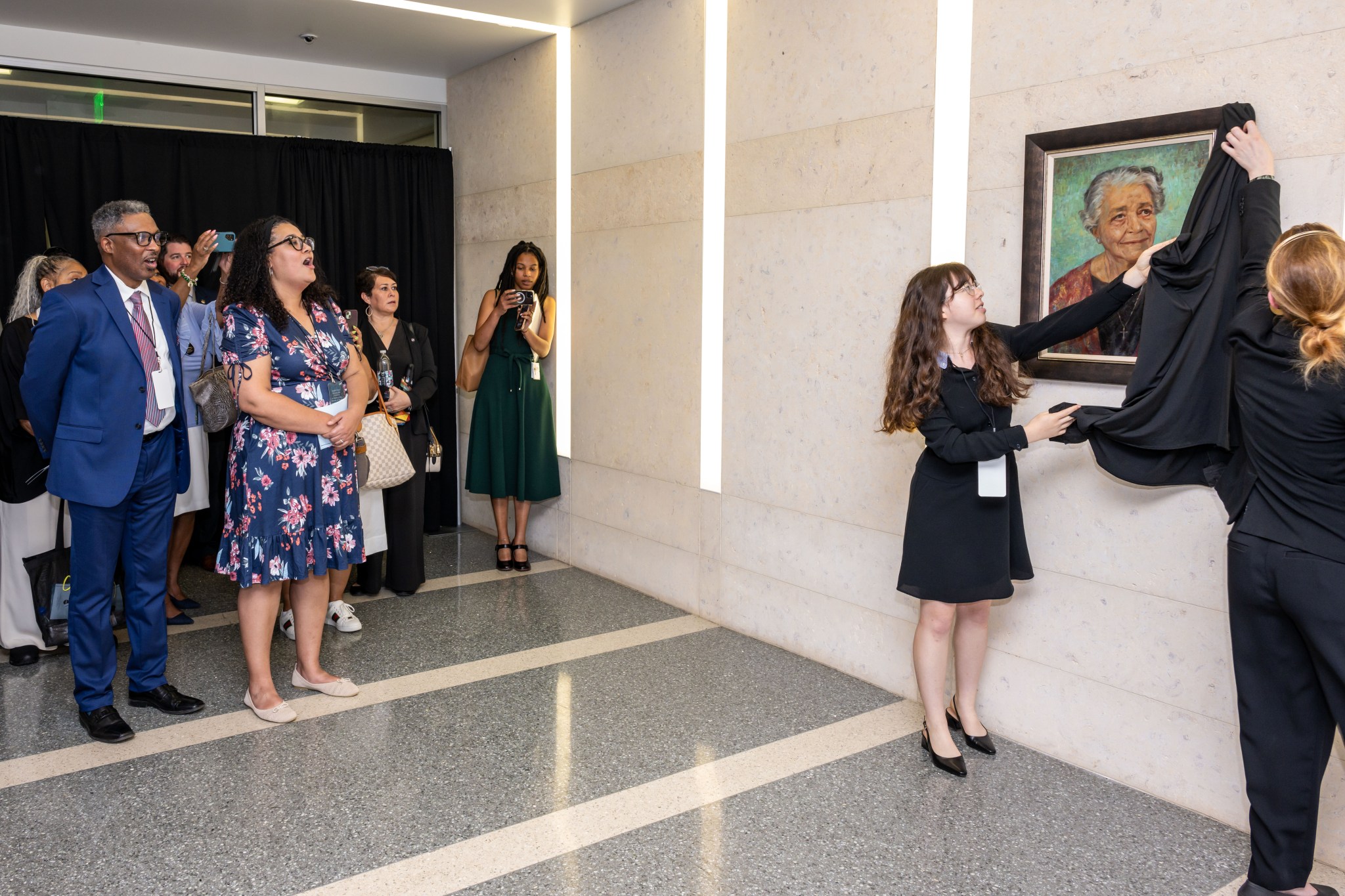NASA Johnson Dedicates Dorothy Vaughan Center to Women of Apollo
On the eve of the 55th anniversary of the Apollo 11 Moon landing, NASA’s Johnson Space Center in Houston commemorated the unsung heroes who helped make humanity’s first steps on the Moon possible. To celebrate their enduring legacy, Johnson named one of its central buildings the “Dorothy Vaughan Center in Honor of the Women of […]
On the eve of the 55th anniversary of the Apollo 11 Moon landing, NASA’s Johnson Space Center in Houston commemorated the unsung heroes who helped make humanity’s first steps on the Moon possible.
To celebrate their enduring legacy, Johnson named one of its central buildings the “Dorothy Vaughan Center in Honor of the Women of Apollo” on July 19, 2024, during a ceremony recognizing the early pioneers who laid the groundwork for the Artemis Generation.
Dorothy Vaughan, a mathematician and NASA’s first Black manager, played a crucial role in this historic achievement. As the head of the West Area Computing Unit at Langley Research Center in Hampton, Virginia, from 1949 to 1958, she led her team in mastering new computer programming languages, helping to pave the way for the agency’s current diverse workforce and leadership.
The program included remarks from Johnson Director Vanessa Wyche, NASA astronaut Christina Koch, and Deputy Associate Administrator Casey Swails.
“Dorothy Vaughan, alongside all of our Women of Apollo, represents the best of NASA’s past, and their legacies serve as the inspiration and foundation for our future,” said Wyche. “As we prepare to take our next giant leap, the Women of Apollo will take each step with us.”
NASA leadership joined for the special occasion, including Associate Administrator Jim Free, Acting Associate Administrator for Space Technology Mission Directorate and Langley Director Clayton Turner, Director of NASA’s Stennis Space Center in Mississippi John Bailey, and former Johnson Director Mike Coats. Also in attendance were Reps. Lizzie Fletcher and Sylvia Garcia, and representatives from the offices of Sen. Ted Cruz, Sen. John Cornyn, and Rep. Brian Babin.
NASA astronauts Suni Williams, Jeanette J. Epps, and Tracy C. Dyson celebrated the historic moment with a special message from the International Space Station.
“We have accomplished our dreams of space exploration thanks to the many NASA women that paved the way for diversity, inclusion, and excellence,” said Epps.
“Building on the efforts of our space exploration pioneers, we continue to work for the benefit of humanity,” said Dyson. “NASA’s success is only possible because of the tenacity and expertise of individuals like Dorothy Vaughan whose legacy of brilliance continues to inspire us today.”
The program also featured the reading of a poem by Dr. Vivian Ayers Allen, a Pulitzer Prize-nominated poet, cultural activist, and former NASA editor and typist. The poem, titled “Hawk,” was published just 11 weeks before humankind’s first venture into space with Sputnik I as an allegory where space flight symbolizes freedom. Allen’s daughter, Phylicia Rashad, recited the poem ahead of the presentation by Texas Southern University’s Dr. Thomas F. Freeman Debate Team.
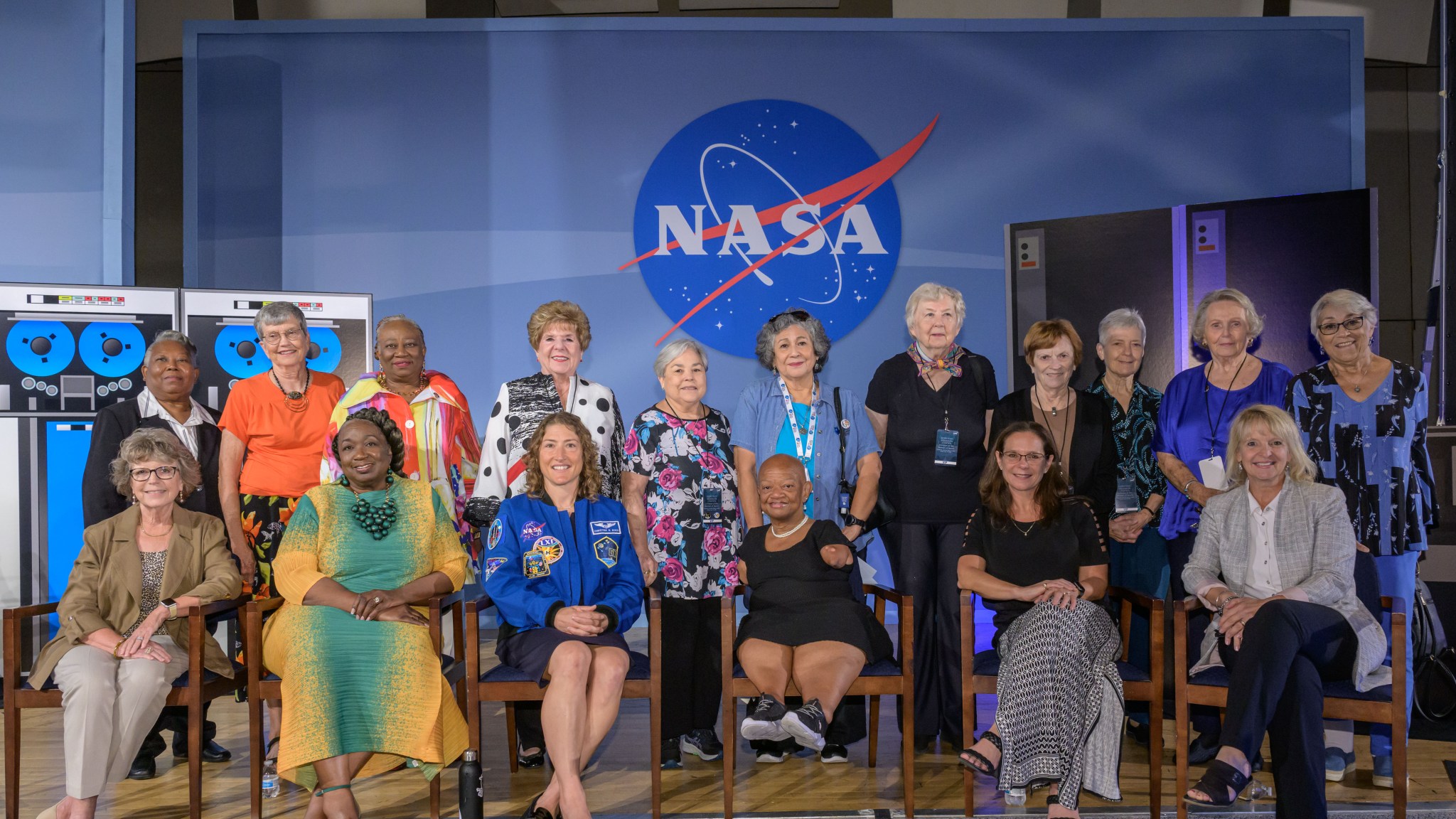
The ceremony also included a “Women in Human Spaceflight” panel discussion with some of the impactful Women of Apollo and current trailblazers in human spaceflight.
The panelists inspired the crowd with their collective experiences of breaking barriers and making monumental contributions to space exploration.
Debbie Korth, deputy manager of the Orion Program, moderated the event with panelists Lara Kearney, manager of NASA’s Extravehicular Activity and Human Surface Mobility Program; Sandy Johnson, CEO of Barrios Technology; NASA astronaut Christina Hammock Koch; Andrea Mosie, manager and senior sample processor for NASA’s Lunar Materials Repository Laboratory; and Dr. Shirley Price, former NASA equal opportunity specialist.
“I learned that as long as I am being myself, I can make a difference,” said Price. “Dorothy Vaughan helped me make that difference because she paved the way for me, and I am here to pave the way forward for more to follow.”
Koch reflected on the future, saying, “I am looking forward to us being driven by our values of inclusivity, making sure that we are going for all and by all in a non-hidden way and that we are calling out the amazing contributions of every single person that has a dream.”
Heather Vaughan-Batten, Vaughan’s granddaughter, marked the official naming of the building with a ribbon-cutting ceremony.
The event concluded with a surprise unveiling of a painting of Vaughan to her family. The portrait, created by Eliza Hoffman, an artist and student from Clear Creek Independent High School, now illuminates the main hallway of the Dorothy Vaughan Center in honor of the Women of Apollo.
More than 30 portraits of women who made notable contributions to NASA during the Apollo era now line the building’s main hallway.
Watch the building dedication ceremony, ribbon-cutting, and portrait unveiling below.
What's Your Reaction?



















.jpg?#)























